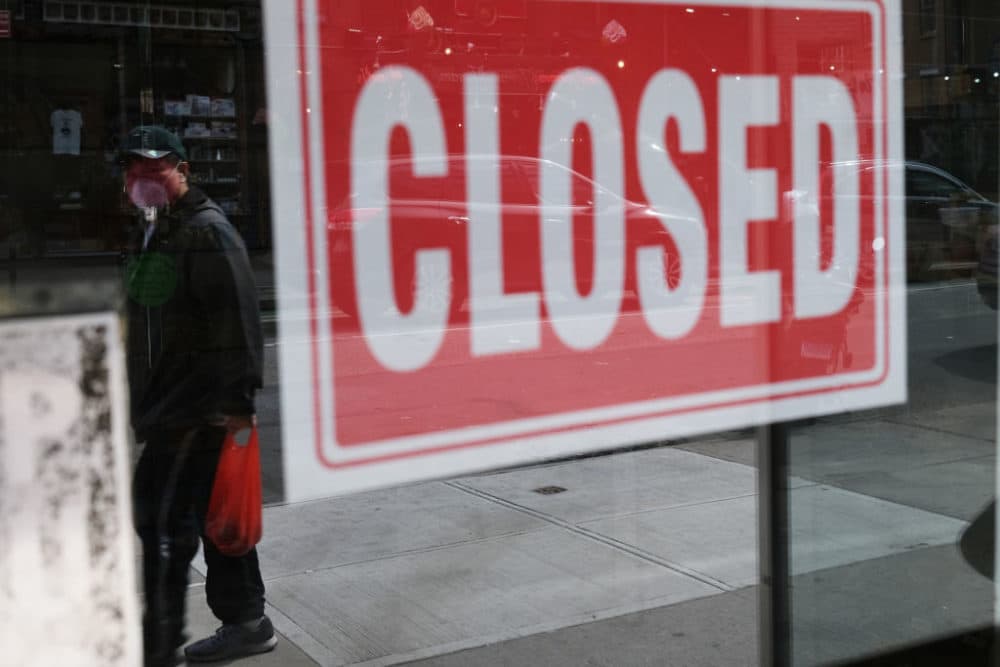Advertisement
Economist Mohamed El-Erian On New Spending Bill, US Economic Outlook

As Republican senators prepare to introduce a $1 trillion coronavirus relief package on Monday that includes another $1,200 one-time payment for Americans, economist Mohamed El-Erian warns against repeating the same solutions over and over.
The first round of $1,200 stimulus checks helped both recipients and the economy, says El-Erian, who serves as chief economic adviser at Allianz and president-elect of Queens College, Cambridge.
Now, millions of people still can’t find jobs to no fault of their own, while others are losing their jobs as states move backward in economic reopening because of COVID-19 spikes. As household economic insecurity increases, the U.S. needs to come up with a better solution to resolve the fundamental conflict between “lives and livelihood,” he says.
“We can't be this pendulum that swings between reopening and then closing again, reopening and closing. And we have to reconcile health with economic reopening,” he says. “And you look around the world, it is possible if people change behaviors.”
Republicans don't want to continue the $600 per week unemployment payments, citing the extra benefit disincentivized people from going back to work.
As the economy started reopening, some people were better off staying home than going back to work because of the extra unemployment money — but that argument is less valid now that states are closing down again, he says.
Lawmakers need to figure out how to set a safety net and whether some people should be penalized because others are over-benefitting, he says.
“If the economy is going back to normal, the answer is no. You shouldn't allow people to get paid more for staying at home,” he says. “But if people can't get jobs, if it's not a question of willingness but it's a question of ability, then there is a good argument for continuing this extra support.”
Prior to the new $1 trillion plan from Republicans, the House passed a $3 trillion additional stimulus bill in May, which hasn't been taken up in the Senate. Democrats including Senate Minority Leader Chuck Schumer have said limiting spending now could lead to worse economic problems in the future.
The U.S. needs to make decisions that promote economic growth in the future, he says, because the country’s debt load also depends on earnings. Adding debt without growth creates a debt problem, he says.
Advertisement
Congress needs to fund “pure relief” to address Americans’ suffering, as well as testing and health care to ensure people can stay healthy and economically productive while awaiting a COVID-19 vaccine, he says. This represents two of the four key areas El-Erian thinks Congress should focus on over time, along with addressing long-term “downward pressure on productivity and growth” and household economic insecurity.
Congress should give state and local governments more money to make up for revenue lost due to COVID-19 and keep the economy afloat by supporting “productive engagement” with businesses, he says.
“We want to keep things going as we make progress on the health issues,” he says, “and support for state and local authorities is a key element in this regard.”
As many Americans continue to suffer financial hardship, some parts of the economy appear to have bounced back. New home sales went up 13.8% last month, and sales of previously owned homes jumped a record 20.7% in June.
From the housing market to retail sales, backward-looking economic indicators look like the letter ‘V,’ he says, because “things coming back very sharply.” On top of low mortgage rates, people’s optimism and a repressed desire to do things were sparked when the economy started opening up in late May or early June.
But weekly unemployment claims, retail traffic and other important indicators have flattened out, he says. He worries that instead of a ‘V,’ the graph will level off and look like a square root symbol.
“I think that as we go forward, we're going to see that different economic series are going to start being less dynamic, unfortunately, than they've been in June until we sort out this health issue,” he says.
Beyond the U.S., El-Erian says he’s “absolutely terrified” about how COVID-19 could devastate developing economies.
Last time he spoke to Here & Now in April, he explained that developing countries were facing indirect effects of the virus such as lower exports, tourism, worker remittances and farm-direct investments. Now, these countries are dealing with the direct effects of the virus.
Countries such as India and Brazil are experiencing unmanageable outbreaks because health care facilities can’t handle the virus, he says. And the issue of “lives versus livelihood” is more difficult to tackle in developing countries.
“I remember an African friend of mine telling me, ‘We don't have the ability to throw money at this problem like you do,’ ” he says. “ ‘So if we have an outbreak, the choice we may end up facing is, do we die from infection or do we die from hunger?’ ”
As Americans continue living in uncertainty, researchers learn more about the virus every day, he says. Individual behavior is a core reason why the virus is still spreading through various parts of the country, he says.
Living in Southern California, he’s observed that people aren’t wearing masks enough. The problem isn’t that masks aren’t available, but that people assess individual risk differently than the risk facing society.
Until people’s risk assessments align, questions such as whether to reopen schools will remain unanswered, he says.
“It's up to individuals to just realize that we can actually solve that issue,” he says, “or at least minimize the disruptions.”
Julia Corcoran produced and edited this interview for broadcast with Todd Mundt. Allison Hagan adapted it for the web.
This segment aired on July 27, 2020.

